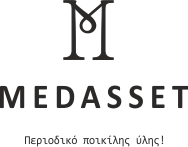To check if you shot a well-exposed photo, you should review its histogram and check that it has a correct distribution and that there are no crushed shadows or blown-out highlights. You may find useful our guide on how to read the histogram here. This tool corrects the zero value from our light meter by moving the natural zero of our light meter to the right or left, so that the camera doesn’t try to balance to an exposure value of zero. Instead, it balances to an exposure value that is more overexposed or underexposed than the initially estimated value. This exposure metering mode is called Evaluative metering in Canon cameras.
- We can also say that we got “crushed shadows” or we “crushed the blacks,” and the result is that we have no information in the darkest areas of the image.
- However, to solve this problem in automatic modes, there’s another tool incorporated into digital cameras called exposure compensation.
- The other important effect of aperture is on depth of field.
- Eventually, you should add your own points to each of these lists and expand on new exposure techniques over time.
However, your goal should be to outgrow these tips and develop your own mental model instead. Shutter speed is one of the most intuitive aspects of exposure, and a bit of practice power trend will be enough to help your photographs improve significantly. But if you can lay a solid groundwork, you’ll be at a huge advantage when you go out and practice it for yourself.
What is exposure value? The basic photography exposure settings
On most lenses, f/4, f/5.6, and f/8 are three of the sharpest apertures. In addition, sharpness should not be your main concern. It is better to have a photo with the proper depth of field, even if it means that some low-level pixels have a bit less detail. “Exposure to the right technique” consists of shooting with the intention of having an overexposed image with the histogram tilted towards the right. It’s commonly used in low light situations in order to capture all the details on the shadows and avoid digital noise.
Words Nearby exposure
Eventually, you should add your own points to each of these lists and expand on new exposure techniques over time. At least on this camera – and they do differ – using ISO 1600 should be perfectly fine, especially because questrade forex review it is possible to reduce noise to a degree in post-production. However, it still is best to use your base ISO whenever possible, capturing your photo with a brighter exposure (shutter speed and aperture) instead.
how to measure photography exposure: The exposure meter
The best thing you can do now is go out and test the suggestions above for yourself. Play around with your exposure settings, as well as ISO. Exposure is something you will never stop improving, and, without a doubt, it is worth the effort to learn. These abstract concepts can be difficult to get your head around, oanda review so this video gives a more tangible explanation. First imagine that the cup is our photograph, and filling it up with water is like filling it up with light to expose the image. If we pour in the water very slowly, it’s going to take a long time to fill up – which would be like using a slow shutter speed.
You will save yourself a lot of difficulties if you simply memorize this relationship. Not really, because it all depends upon some outside factors – most importantly, the amount of movement in your scene. If your subject is moving very quickly, you’ll need a fast shutter speed. If your subject is standing still, or only moving very slowly, you can get away with a longer shutter speed.
What Is Exposure? A Beginner’s Guide
Moreover, I recommend you read our article on the exposure triangle to learn how to read a histogram. In order to master exposure, I recommend playing with exposure as much as you can, shooting subjects in different light situations, and trying to balance the main exposure elements. A long exposure image is a photo taken using slow shutter speed, generally considered to be slower than 1/60th of a second. Another essential thing to learn in exposure is that the difference from one exposure value to another is called an exposure stop. Each move of one stop either to the right or the left will double or halve the amount of light captured by the camera.
The best route to learn all of this is just to keep practicing. Over time, you’ll build a good mental picture of the shutter speeds you can use in a particular environment without risking motion blur. Whether that’s 1/250 second, 1/10 second, or 20 seconds, it’ll be second nature. Also, after you’ve taken a picture in the field, review it and see if there is any blur when you zoom in. Avoid using those settings, since they are simulated and can lower your image quality. It brightens your photos, but it is not part of your “luminous exposure,” since it does not affect the amount of light that reaches your camera sensor (the definition of exposure).
You may also like
-
Czy Żabka jest otwarta w Wielkanoc i Poniedziałek Wielkanocny? Sprawdź, czy zrobisz zakupy w Żabce w Lublinie 31 marca i 1 kwietnia Lublin, ESKA pl
-
Nasdaq 100 Index: What It Is, How It’s Weighted and Traded
-
1 Little-Known Vanguard Index Fund to Buy Before It Soars 50%, According to a Wall Street Analyst The Motley Fool
-
Форекс статьи Swap-free счета или исламские счета
-
Whats the difference between Chinas yuan and renminbi? South China Morning Post
